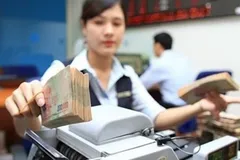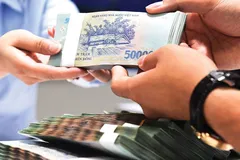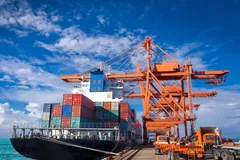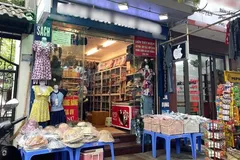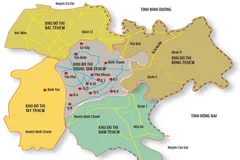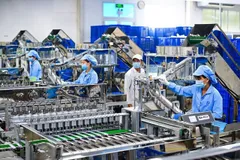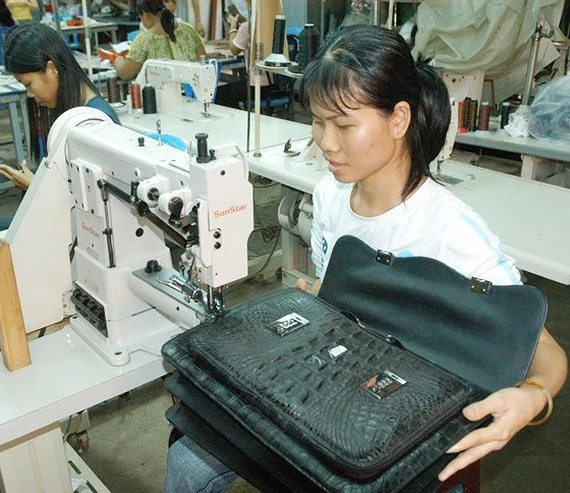
According to Mr. Nguyen Duc Thuan, chairman of the Vietnam Leather, Footwear and Handbag Association (LEFASO), Vietnam has been facing fierce competition from some countries in the ASEAN. However, it is forecast that demand for footwear products at main markets of the footwear industry remains at high level this year so the industry will continue to develop.
The forecast of LEFASO is grounded because although there were several holidays in the first quarter of this year, the production and trading results of the footwear industry still continued to post growth at a two-digit number.
Statistics showed that footwear production in the first quarter of this year was estimated at 62.9 million pairs of shoes, up 11.7 percent over the same period last year. Footwear exports were estimated at US$3.97 billion, up 15.3 percent over the same period last year.
According to calculation of LEFASO, this year the industrial index of footwear sector will go up 11 percent compared to last year. The industry will try to raise localization ratio of footwear products to 60 percent. Export of footwear will rank fourth and export of handbags will rank tenth. In addition, footwear and handbags will be in the list of top ten key export products of Vietnam.
One of the advantages and opportunities for the domestic footwear industry in the coming time is that China will continue to reduce investment incentives in the fields of garment, textile and footwear to focus on high-tech industries. Therefore, footwear and handbag processing orders will maintain a tendency to shift from China to Vietnam to make use of opportunities from the effective Comprehensive and Progressive Agreement for Trans-Pacific Partnership (CPTPP) and the EU-Vietnam Free Trade Agreement (EVFTA).
Noticeably, CPTPP and EVFTA will possibly bring big opportunities for Vietnam’s footwear industry to develop, helping firms to lower input costs, easily approach new technology, increase productivity and maintain market share in the US, the EU and Japan.
On the other hand, the trade war between the US and China will affect domestic import and export and boost investment of foreign direct investment enterprises in the footwear industry.
At the same time, building of material production areas in Vietnam will help local firms to step by step participate deeply into the global supply chain, strengthen competitiveness when joining major free trade agreements, increase added value in export turnover and improve growth quality of the industry.
According to experts, although these aforesaid new generation free trade agreements will open opportunities for footwear producers, they also pose various difficulties and challenges. Especially, in comparison with signed free trade agreements, the rules of origin in CPTPP have some new points, including the rules of origin of goods, rules of origin of refurbished goods, recycled goods, formula to calculate regional value content (RVC) and the list of product specific rules (PSR) regulated in detail according to specific production stages.
Meanwhile, technology application in management and production of the footwear industry remained low and labor productivity was merely equal to 60-70 percent compared to that of FDI enterprises.
Several local firms have not participated in the global supply chain as most of them do outsourcing. They do not have departments for product research and development and usually are not independent of materials and designs while labor costs are on increase day by day.
Besides, footwear producers also have to deal with challenges such as rising trade protectionism from import countries.
As for rules of origin when participating in the CPTPP, Ms. Phan Thi Thanh Xuan, general secretary of LEFASO, said that localization ratio of the industry has climbed rapidly, reaching the level of 50 percent at the present.
With such ratio, rules of origin will not be a big obstacle for local footwear firms. It is worrisome that local firms will encounter difficulties in production management and practice of quality standards to meet technical and trade barriers and standards on social responsibility, said Ms. Xuan.
CPTPP is a large playground, forcing firms to be well-prepared before taking part in, she added.
Firms should establish a department to study thoroughly regulations of CPTPP, prepare material supply suitable with the rules of origin, upgrade equipment and technology to meet requirements about quality of each member of the CPTPP and speed up trade promotion.
The Government needs to complete decrees and circulations detailing the roadmap of tax reduction, rules of origin and other terms of CPTPP to help firms to easily approach and implement in accord with requirements so as to make the most out of preferential treatments brought by CPTPP, increase added value and enhance growth quality.


